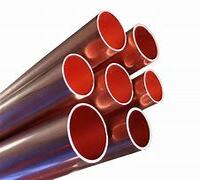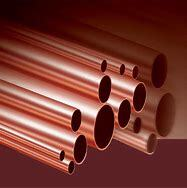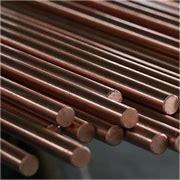1. Introduction
Breaking news just 24 hours ago: Authorities in Ohio shut down an illegal scrap operation where workers were burning insulated copper wire to extract metal—a dangerous practice that releases toxic fumes and violates EPA regulations. This crackdown highlights a growing trend: legitimate recyclers are demanding clean, stripped copper, and paying top dollar for it. If you’ve got old wiring, motors, or even HVAC copper tubing lying around, knowing how to properly strip copper wire could turn your junk into serious cash—without risking fines or your lungs.

Stripping copper wire isn’t just about yanking off insulation. Done right, you preserve the copper’s purity, avoid contamination, and get the best price per pound. In this guide, we’ll show you the best way to strip copper wire, debunk myths (no, burning it isn’t ‘faster’), and help you spot high-value copper items like copper rod, copper strip, and copper bonded ground rods that might be hiding in your garage or job site.
2. Why Stripping Copper Wire Matters
Scrap yards pay significantly more for bare bright copper than insulated wire. For example, while insulated wire might fetch $1.50/lb, stripped bare bright can go for $3.50+/lb. That’s more than double! Plus, many recyclers now refuse burned wire entirely—it’s contaminated with carbon and toxins, making it nearly worthless.
Beyond profit, there’s safety and legality. Burning copper wire releases dioxins and furans—chemicals linked to cancer and respiratory illness. Many states classify this as hazardous waste disposal, punishable by hefty fines. So skip the lighter and grab the right tools instead.
3. Tools You’ll Need
- Manual wire stripper (for small jobs)
- Automatic wire stripper or cable ripper (for medium volumes)
- Bench-mounted wire granulator (for large-scale operations)
- Utility knife (as a last resort—but use extreme caution)
- Safety gloves and eye protection

Pro tip: Avoid using pliers or teeth (yes, people try it). You’ll nick the copper, reducing its grade and value.
4. Step-by-Step: Best Way to Strip Copper Wire
4.1. Sort Your Wire First
Not all copper is equal. Separate:
- THHN/THWN building wire (usually solid core, easy to strip)
- Romex/NM cable (contains multiple conductors—strip each individually)
- Coaxial or data cables (often have aluminum shielding—lower value)
- Motor windings (may contain enamel-coated copper—requires special handling)
Look out for copper rod remnants, copper round bar offcuts, or even copper strip wire from old electrical panels—they’re often overlooked goldmines.

4.2. Choose Your Stripping Method
For thin wires (<10 AWG): Use a manual wire stripper. Adjust the gauge setting, clamp, and pull. Clean and fast.
For thick cables (like 2/0 or 4/0): Use an automatic cable stripper. These slice through insulation without damaging the copper inside.
For long runs: A bench-mounted granulator shreds insulation and separates copper mechanically—ideal if you’re stripping wire for scrap regularly.
Never burn copper wire for scrap. It’s illegal in most jurisdictions, dangerous, and slashes your payout.
4.3. Clean and Bundle
Wipe stripped copper with a dry cloth to remove dust or grease. Bundle tightly with copper wire or zip ties (never steel!). Label as ‘bare bright’ when selling.
5. Spotting Other Valuable Copper Items
While you’re sorting, keep an eye out for these high-value copper products:
- Copper earth rod or earthing rod copper: Often used in grounding systems. Solid copper or copper bonded steel versions both have scrap value.
- Copper bonded ground rod or copper clad earth rod: These contain a steel core with copper cladding—still recyclable, but priced lower than pure copper.
- Copper strip or flat copper strip: Common in bus bars, transformers, or roofing (copper roof strip). Even thin copper strips or 1mm copper strip can add up.
- Copper round bar or copper bar: Machining shops often discard offcuts—these are pure copper and highly valuable.
- Aircon copper pipe or AC copper tubing: HVAC systems use high-purity copper lines. Drain any oil, cut into manageable lengths, and sell as clean copper tube.
Check local listings for ‘copper strip near me’ or ‘copper bars for sale’—you might find buyers who pay more than scrap yards for specific forms like beryllium copper strip or nickel plated copper strip.
6. What NOT to Do
- Don’t burn insulation off—ever.
- Don’t mix copper with other metals (e.g., brass fittings on copper pipe). Separation increases value.
- Don’t ignore copper alloy strip or flexible copper bus bar—they may contain valuable alloys like beryllium copper.
- Don’t assume all ‘copper-colored’ rods are pure copper. Copper bonded steel looks similar but has less value. Test with a magnet—if it sticks, it’s not pure copper.
7. Conclusion
Stripping copper wire for scrap doesn’t have to be backbreaking or risky. With the right tools and techniques, you can safely extract maximum value from every foot of wire—and uncover hidden treasures like copper rod, copper strip, and copper tubing along the way. Remember: clean, pure, and unburned copper always wins at the scrap yard. So ditch the torch, grab a stripper, and start turning that tangled mess into cold, hard cash.
Our Website founded on October 17, 2012, is a high-tech enterprise committed to the research and development, production, processing, sales and technical services of ceramic relative materials such as How. Our products includes but not limited to Boron Carbide Ceramic Products, Boron Nitride Ceramic Products, Silicon Carbide Ceramic Products, Silicon Nitride Ceramic Products, Zirconium Dioxide Ceramic Products, etc. If you are interested, please feel free to contact us.

